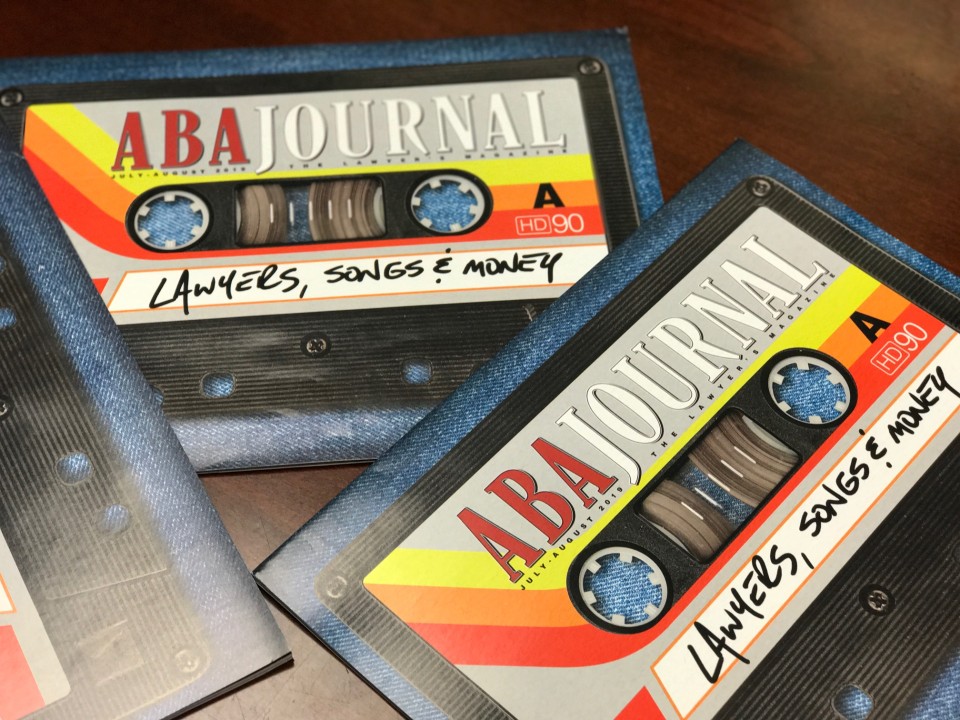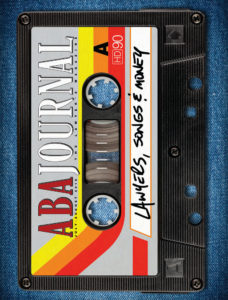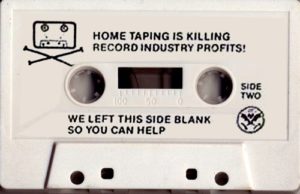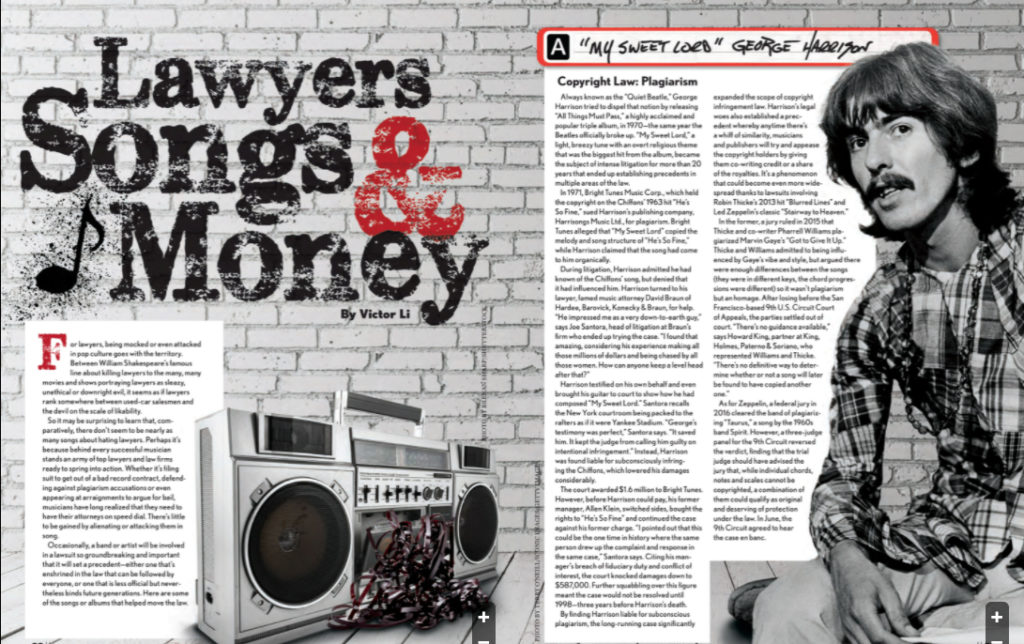
My latest cover for the ABA Journal, entitled “Lawyers, Songs and Money,” came about because several of us wished the story, a version of which was pitched several years ago by another editor, had actually come to pass in publication. Tracing legal precent over 60 years within the music industry seemed daunting but author and assistant managing editor, Victor Li, wanted the story in the magazine as badly as the rest of us, if not more. So, he simply did just that and wrote a fine piece.
 The title is, of course, a riff off of the Warren Zevon song, “Lawyers, Guns and Money,” and there were several different ways I could have chosen to design a cover with such a title. I went down a few rabbit holes creatively before circling back to my initial idea of the entire cover and Journal logo as one giant cassette.
The title is, of course, a riff off of the Warren Zevon song, “Lawyers, Guns and Money,” and there were several different ways I could have chosen to design a cover with such a title. I went down a few rabbit holes creatively before circling back to my initial idea of the entire cover and Journal logo as one giant cassette.
It merely couldn’t be a cassette tape, however. Nope. Not even a cassingle—if you’re quirky or old enough to know just what that is.
This is because, first of all, there is nothing created with more concern or care than a mixtape. In fact, I venture any mixtape to be either created out of love or aspiration. Or, if the recipient is lucky enough, both. This “love” I speak of could be simply a love for having the perfect playlist, a solid set of a series of songs serving as the soundtrack to our lives. A private mixtape made for one’s own enjoyment to potentially share with others at their discretion. Or, just like an old episode of the TV sitcom, Friends, it can serve as the ultimate thoughtful gift of love, because real time, personal meaning and consideration went into its creation. Just don’t pull a “Chandler” and give a mixtape to Monica that was made for you by Janice.
A mixtape created out of aspiration could still be one from the heart as a last ditch effort to aspire to win the affections of another, but in my definition, it comes from true artistry. An artist who keenly desires to display their talents as a musician, rapper or DJ and desperately wants to get the word out about their music will make multiple mixtapes to simply give away or sell on the cheap. This is also sometimes known as a “party tape.” As a prime example, some of the more famous musical success stories involve rappers such as Afrika Bambaataa and DJs like Grandmaster Flash selling mixtapes out of the trunk of their cars in an effort to pursue fame and fortune, but most importantly, recognition of their artistry. Today, the issuing of a mixtape isn’t just reserved for up-and-coming artists, but established rap artists are encouraged by peers as well as fans to drop a mixtape online—for free—simply to reinforce their street cred by displaying their keen ability to freestyle rap. Jay Z famously released The S. Carter Collection in 2003 after certain pressure from fans of his concert tour mate 50 Cent, who had unquestionable street certification due to the popularity of several of his own mixtapes. S. Carter was well-received and cemented Jay Z as the quintessential rapper of the day. In fact, Jay Z’s still in the business of making mixtapes, only now he’s created a restaurant in L.A. called Mixtape.

The visual cues of a mixtape are also a very important design choice in my selection for cover. The implication is a perfectly custom curation of content will ensue, either by listening to the actual tape, or, in this sense, metaphorically as you turn the page. There’s an amount of trust that the content will not only be good, but special. Which is why I made sure there was a visual payoff when you turn the page. Contents, page 1 showcases the Village People, large and in charge and in full 70s splendor.

Lastly, I thought it important to choose the mixtape as the visual medium for the Journal‘s account of legal precedents in music because the cassette tape was the first public medium which allowed the masses to record music. Yes, there was reel-to-reel and then recordable 8-track, but they were less accessible to the many. Perhaps some of you might recall the 80s anti-copyright infringement slogan “Home Taping Is Killing Music” issued by the British Phonographic Industry. It was often parodied with funny false slogans like “Home Sewing Is Killing Fashion.” The recording industry was initially up in arms over the possibility that customers would no longer buy music but instead record it from someone who had or, gasp (!) simply do so from the radio. But the cat was out of the bag and, over the course of the decade, new recordable mediums debuted, such as the Compact Disc, DAT tapes and the Sony Minidisc. This controversy ultimately led to the Audio Home Recording Act of 1992, and is a direct parallel to the legal precedent mentioned in our cover story “Lawyers, Songs and Money” written by Victor Li regarding the advent of MP3 compression technology, the piracy which ensued and Metallica testifying about it before Congress. What better way to demonstrate the relation of law and music than by a visual display of what ultimately led to an earlier legal precedent?
I hope you enjoy this special mixtape made lovingly just for you by the staff of the ABA Journal. You can see the 12 Songs That Rocked the Law slideshow here.And, you can read the cover story here.
